Somebody once said that sound, science-based fisheries management amounts to “addition through subtraction.” When confronted with dangerously low numbers in a fish population, managers may reduce short-term harvest levels so that populations rebound. When that population is forage fish such as the Atlantic menhaden—one that is vital to predator health and one which has nearly disappeared from a large part of its historic range—management action provides cascading benefits to both marine ecosystems and coastal economies.
After years of disregard by fishery management officials in favor of massive harvests by private industry, recent shifts in menhaden management policies have quickly yielded big gains. But whether we’ll continue to see the rebound of of bunker along the Atlantic coast depends mostly on whether the Atlantic States Marine Fisheries Commission (ASMFC) continues to make decisions that leave enough bait in our coastal waters to support the predator fish we pursue, the birds that give them away, and the marine mammals such as whales that support tourism and make our days on the water all the more memorable. At it's 75th annual meeting, October 23-27 in Bar Harbor, Maine, the ASMFC’s finds itself at a waypoint towards Atlantic fisheries recovery, and faces another chance to do right by our menhaden.
A Dark Management History
Prior to 2012, Atlantic menhaden, also referred to as pogy, bunker or fatbacks, were for all practical purposes an unmanaged species. Roughly 20 percent of the total Atlantic coast menhaden catch provides bait for lobster pots, crab traps and for use in recreational fishing. The other 80 percent, for decades, has been the work of a single company, Virginia-based Omega Protein. Omega Protein nets these tiny fish in massive numbers and then transports them to reduction plants where they are ground up for their rich oils and raw proteins, which are subsequently turned into products such as cosmetics and food pellets for use in foreign aquaculture. Omega’s reduction fishery is concentrated on Chesapeake Bay, which serves as the primary nursery for menhaden and many of its predators such as striped bass.
By the turn of the century, groups of scientists, commercial and recreational fishermen and environmental advocates had watched for years as striped bass populations fell and individual fish became thin and sickly, weakfish declined and other once vibrant fisheries begin to fade.
The driving factor in the decline of striped bass, weakfish and many other species along the Atlantic Coast was widely recognized to be a direct product of a dramatic reduction in menhaden population, which studies later revealed had been diminished to dangerously low levels. Yet, for years, menhaden advocates were stonewalled in their efforts advocating for a menhaden management system that would put an end to limitless harvest of the Atlantic’s most important forage fish and leave enough bunker wiggling in the ocean to keep food webs and coastal economies intact.
2012—A Turning Point
The 2006 reauthorization of the Magnuson-Stevens Act (MSA)—our nation’s primary fisheries management law—required the nation’s regional fisheries management councils to end overfishing, rebuild overfished populations within ten years (or as fast as biology allows), and to set science-based catch limits that ensure sustainable harvests. Though the MSA doesn’t bind the ASMFC, its reauthorization ushered in a new era of higher expectations regarding how all fisheries management bodies should do business. As our nation worked to rebuild many depleted fish stocks, the ASMFC received a major scientific wakeup call in the form of a 2010 menhaden stock assessment.
The stock assessment revealed what many had suspected for years, that the Atlantic menhaden had been systematically overfished for 32 of the previous 54 years, and the population was reported to be at its lowest level on record.
Major cuts in harvest were obviously needed, but given the ASMFC’s long reluctance to manage the species at all, never mind sustainably, and the total lack of a legal mandate to act, a rather non-traditional partnership of interests banded together, determined to save the most important fish in the ocean. One of fishing history’s most successful coalitions of recreational anglers, charter fishermen, commercial fishermen and wildlife enthusiasts mounted a tremendous campaign to persuade the ASMFC to reduce the harvest significantly.
People who attended the ASMFC annual meeting in 2012 reported dramatic tension as menhaden advocates argued against decades-long status quo and the interests of Omega Protein. When the meeting concluded, advocates didn’t walk out with the reduction that many independent experts argued for; but, the ASMFC did vote for an unprecedented 25-percent catch reduction compared to the previous year.
According to the Chesapeake Bay Foundation (CBF), “After thousands of letters and e-mails (including 1,036 from CBF advocates) as well as comments at public ASMFC hearings urging greater conservation, the ASMFC voted to adopt a new threshold and target fishing rates to allow the menhaden population to increase to a point where it could support a fishery and fulfill its vital ecological role.” The first-ever 2012 menhaden quotas were widely recognized as an important victory and first step that was expected to “spawn” initial recovery of Atlantic menhaden stocks.
Since the quota was first put on the water in January 2013, menhaden populations have been steadily rebounding, and rising year classes are expected to have added nearly 1 billion more menhaden to the food web by the end of 2016.
Eye Witnesses on the Water
Typically, populations of fish that are undergoing overfishing disappear first from the outer ranges where they occur as residents or migratory visitors. Conversely, during rebuilding efforts, fish tend to increase first in the heart of the range, then the population “spills” out from the center.
Menhaden seem to be following this trend. For several of years now, eyewitness reports have noted a significant surge in menhaden populations in the Mid-Atlantic. This summer, menhaden rounded the corner around Cape Cod, with lots of striped bass, bluefish and bluefin tuna in hot pursuit.
Tom Rosenbauer, Marketing Director of Orvis Rod & Tackle, has been fishing Massachusetts’ waters for more than 20 years.
“For the past 15 years there have been no menhaden in the harbors of Cape and Cod and Martha’s Vineyard. They just disappeared. Two weeks ago, while I was down fishing for albies, I saw more menhaden than I have ever seen in the harbors. They were so thick you could walk on them. I was blown away by the changes. It was like somebody flipped a light switch on.”
Anglers fishing Boston Harbor are celebrating the return of menhaden, as well. And for the first time in decades, the Gulf of Maine received enough migrating bunker to prompt state managers in Maine to pursue an “episodic” quota increase.

Unfortunately, the news is not so good at the southern end of the menhaden’s range, which historically reaches as far south as Stuart, Florida on the state’s famed Treasure Coast.
According to noted marine scientist Dr. Jerry Ault of the University of Miami’s Rosenstiel School of Marine and Atmospheric Science:
“The coastal migration of menhaden schools intersects with the movements—and stomachs—of many larger and more highly valued predators. In Florida, the “Silver King” (Atlantic tarpon), king mackerel, sharks, cobia, and birds like brown pelicans, bald eagles, and ospreys, as well as Royal and Sandwich terns all rely upon these tiny fish to fuel their migrations.”
Savannah-based Capt. Scott Wagner, one of the anglers that pioneered the little-known late-summer tarpon fishery off the Georgia Coast, confirms that he typically locates migratory tarpon around menhaden schools.
“We haven’t seen much, if any, of a rebound. I’m not seeing strong numbers of the peanuts (juvenile menhaden) back in the rivers and sounds, and the schools the tarpon are on along the beaches just aren’t that big. Look, we know that Atlantic menhaden are a coastwide population, and the population used to be large enough to support reduction plants in Georgia and Florida. We’ve got to give them time to come back.”
Remedy for Success
The ASFMC has already backslid once, in 2015, by allowing a 10 percent increase in harvest as soon as a new assessment showed signs of population improvement. In August of this year, during another tense meeting, the ASMFC failed to set any quota for 2017. Since they couldn’t come to a decision, next week, the ASFMC will have to make a decision about the 2017 catch. Commissioners will choose whether to increase menhaden harvest levels, or to continue the recovery and hopefully allow it to move south. Or, they could opt to increase the catch and risk it all, which they should not do.

“From ecological and economic standpoints, it’s ludicrous at this point to allow more of these vital forage fish to be reduced to fish food and WD-40,” said Rosenbauer, “when they’re so much more valuable in the water.”
Fortunately, while they debate catch levels for next year, Commissioners are moving ahead with a big-picture approach for the long term. They are shifting away from a single-species type of approach and in preference of “ecological reference points,” a system of management that decides first how many menhaden must be left in the water to support the food web.
A plan is already underway and next week the ASFMC is expected to finalize the content of a Public Information Document it will release for public comment and hearings later this year which will describe various alternatives for ecological reference points and how they would work. The current draft is inclusive of a broad array of options, and that’s a good thing.
We, the recreational fishing public, deserve a full suite of options to review in that document. If you agree, join me, Coastal Conservation Association Maryland, the International Game Fish Association, Snook and Gamefish Foundation, and many more anglers in letting the ASMFC know that you support the badly needed transition to ecosystem-based management.
If you live anywhere near the Harborside Hotel in Bar Harbor, ME, you can provide your comments to the ASMFC in person at the meeting on October 26, 2017. Otherwise, please call or email your state’s ASMFC representatives listed here. And, if you live near Bar Harbor, then take this important opportunity to provide comments in person at the 75th annual ASMFC meeting this Wednesday, October 26, 2016.








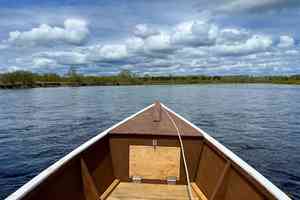

















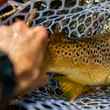
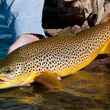
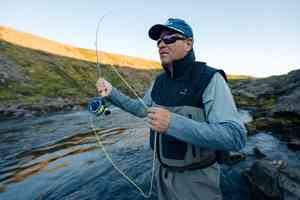


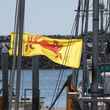
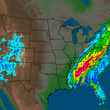
Comments